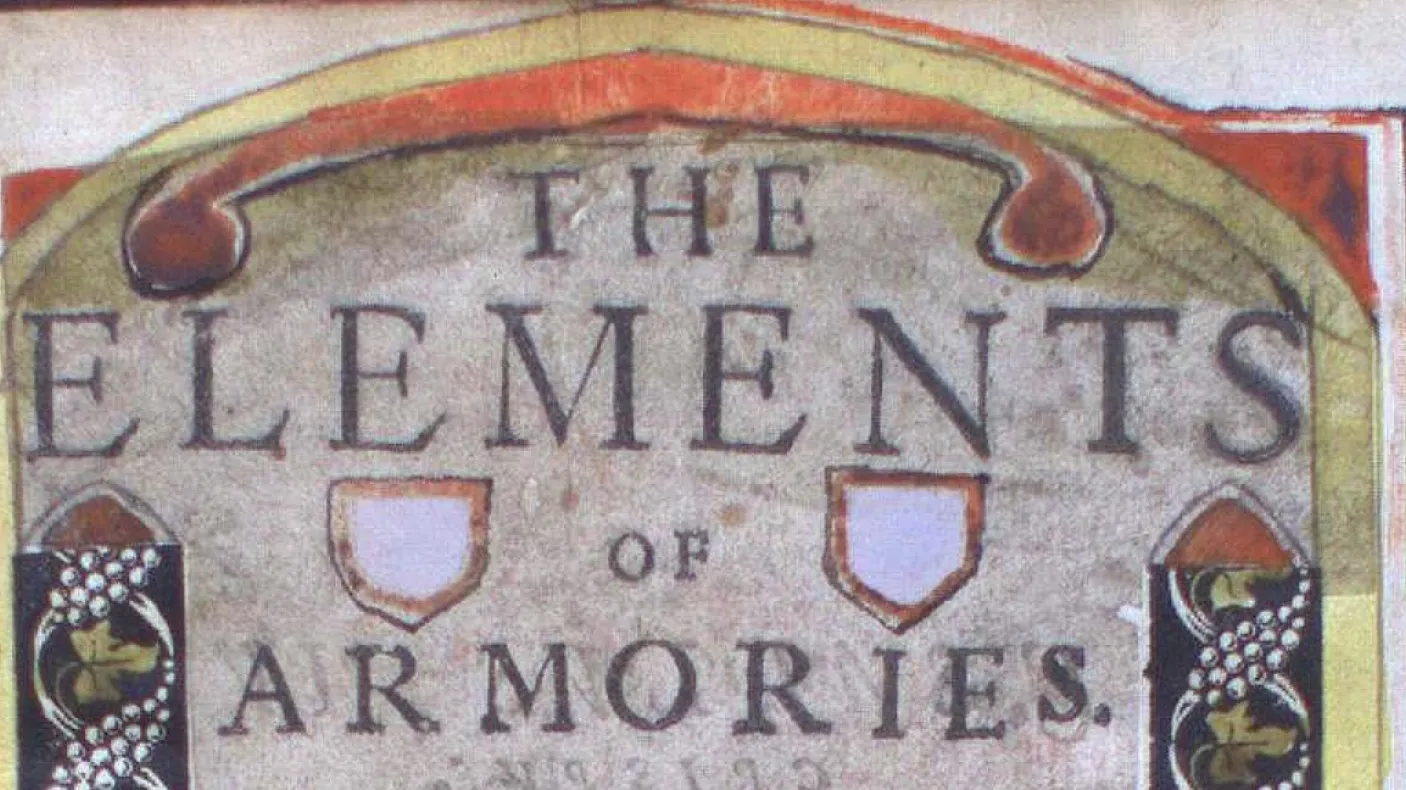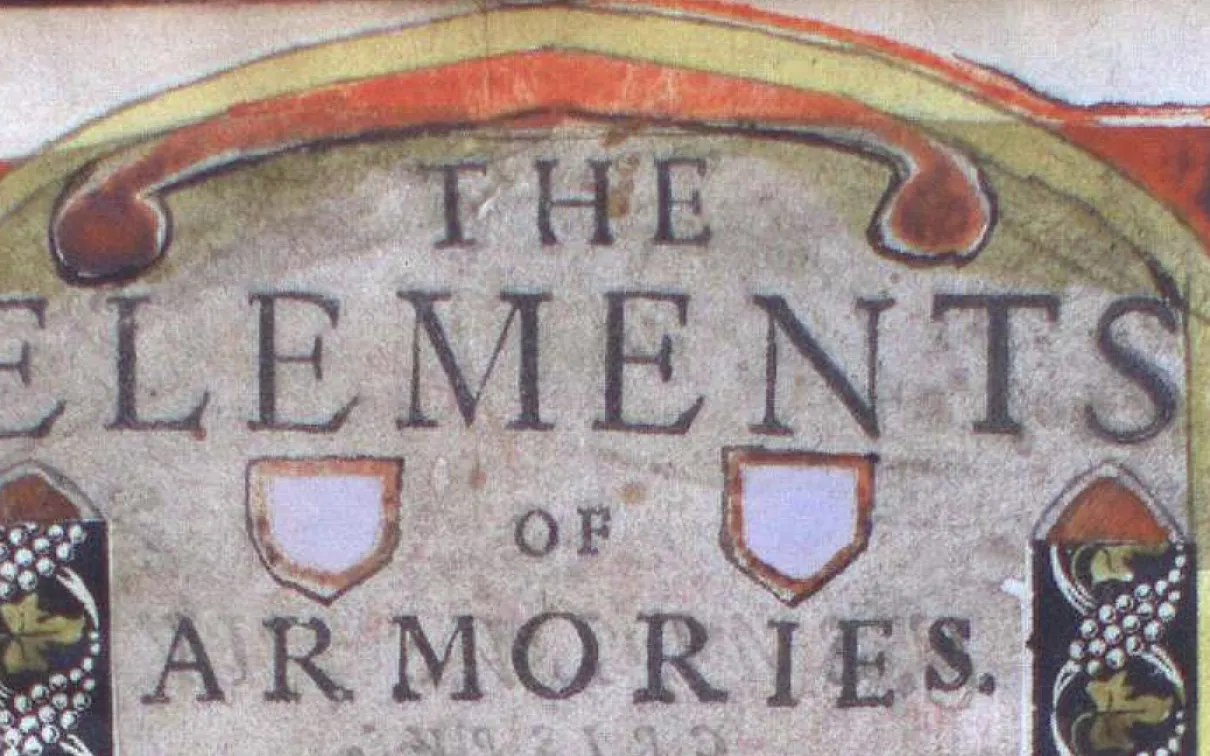'The Elements of Armories': A Very Short History of Heraldry
Published
Categories
Blog Post
The colourful pennants and shields carried by bold knights and courageous squires are known to us today from illustrated books and films telling stories of Robin Hood, or King Arthur and the Knights of the Round Table. But these bright emblems are more than decoration, and have long historical roots.
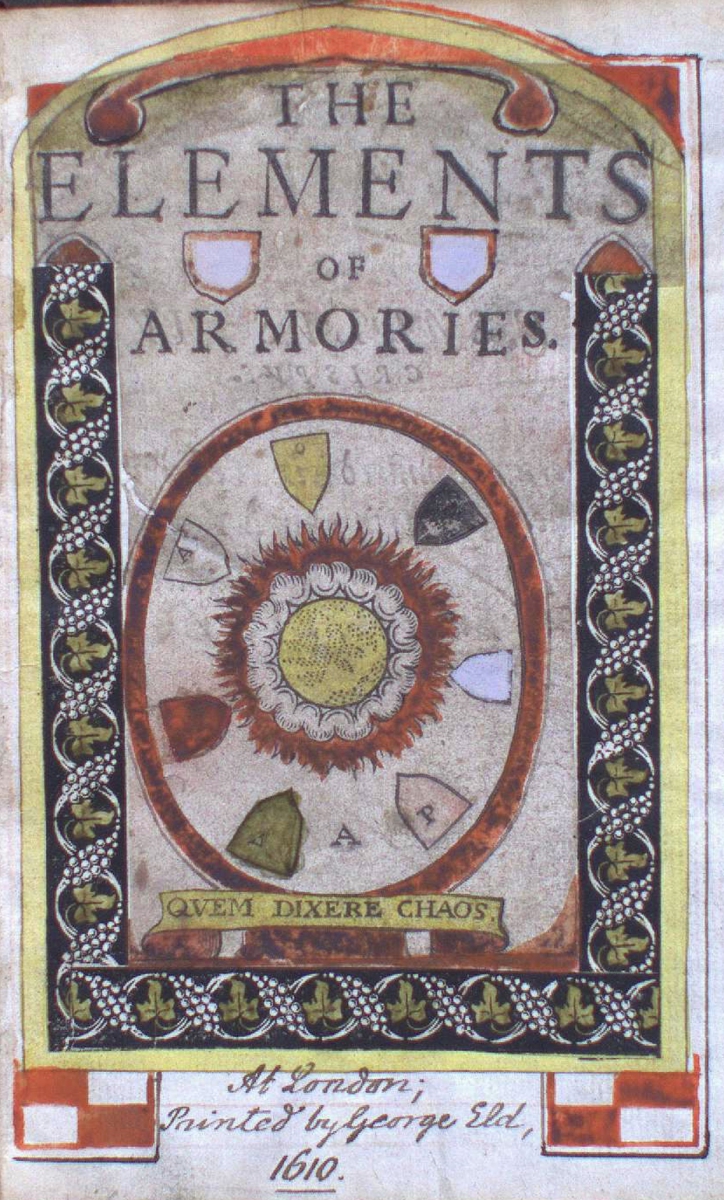

Heraldry is the term for all things relating to these emblems known as arms. The people involved in this profession are known as heralds, and they are responsible for the creation, granting, and study of arms, as well as for deciding questions of rank and protocol related to arms.
The original purpose of heraldry was to help identify people or factions on a field of combat when faces were obscured by armour and helmets. Simple designs were used as identifying marks but these were not permanently associated with a person or family. By the 12th century in Europe a system had arisen where an emblem or coat of arms could be inherited and limited to the use of one family. These became valuable identifying marks on and off the battlefield, as well as raising the social status of the bearer. Roger de Trumpington who died in 1289, is shown on his tomb holding the arms of his family.
Arms could only be used or inherited by armigers - persons who were legally entitled by grant of the king to carry arms. As arms became more complex, heralds were appointed to register and oversee their use. The College of Arms for England was founded in 1484, and is still in service today.
In a book from 1610 called The Elements of Armories, two knights, Sir Eustace and Sir Amias, discuss the function and correct use of arms. Sir Amias defines arms as being ‘Such painted hereditable and Armoriall marks, as by which Gentlemen are knowne, first from the ignoble, and then one from the other.” By 16th century styles of warfare and armour had changed, and heraldry was less important on the battlefield. However it remained popular, and many people petitioned to bear arms. In addition to royal houses, noble families, and knights, ecclesiastical authorities such as bishops were also armigers. Books were published identifying families with their coats of arms and lineage. The most famous of these is Debrett's Peerage, first published in 1769.
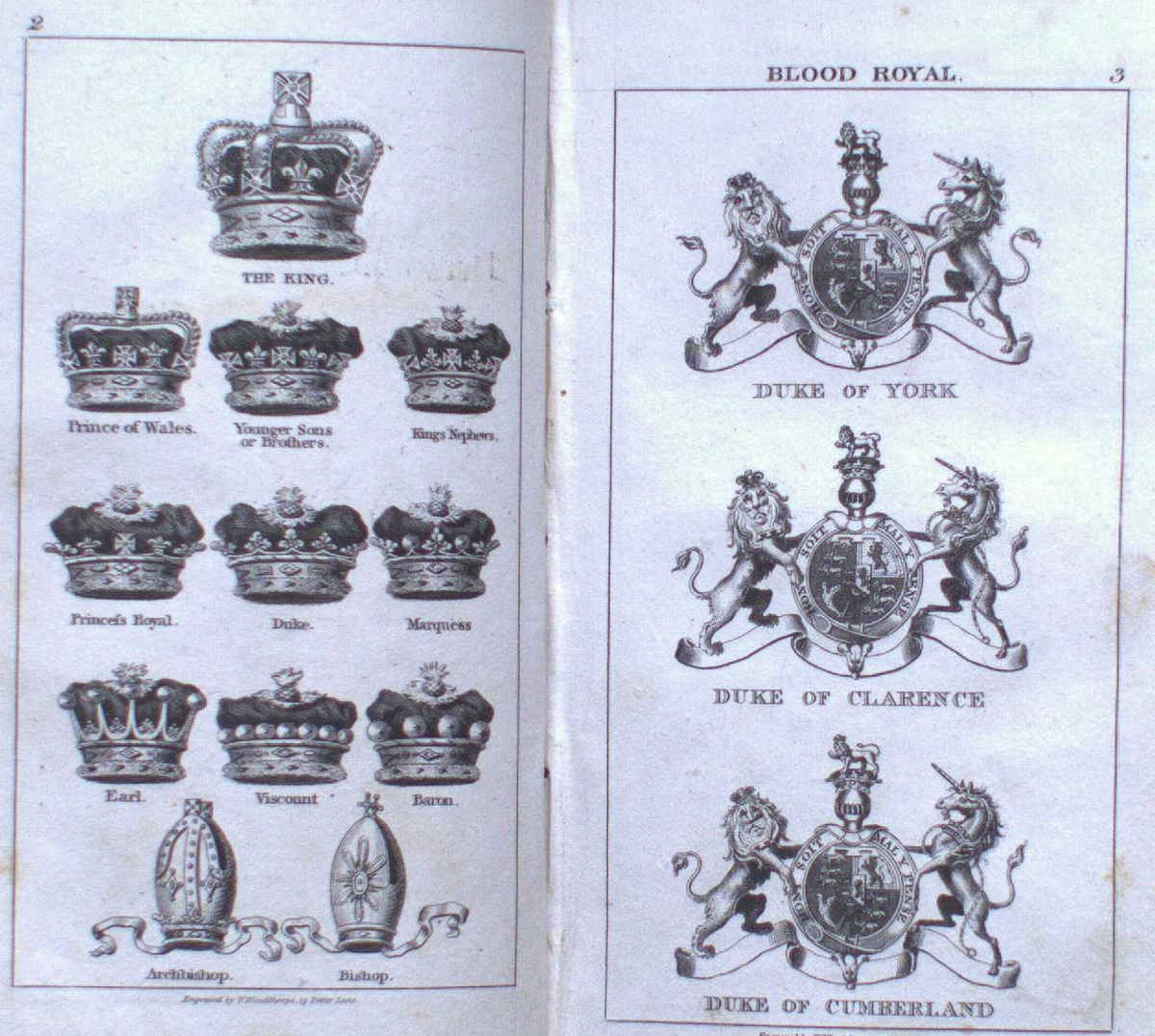
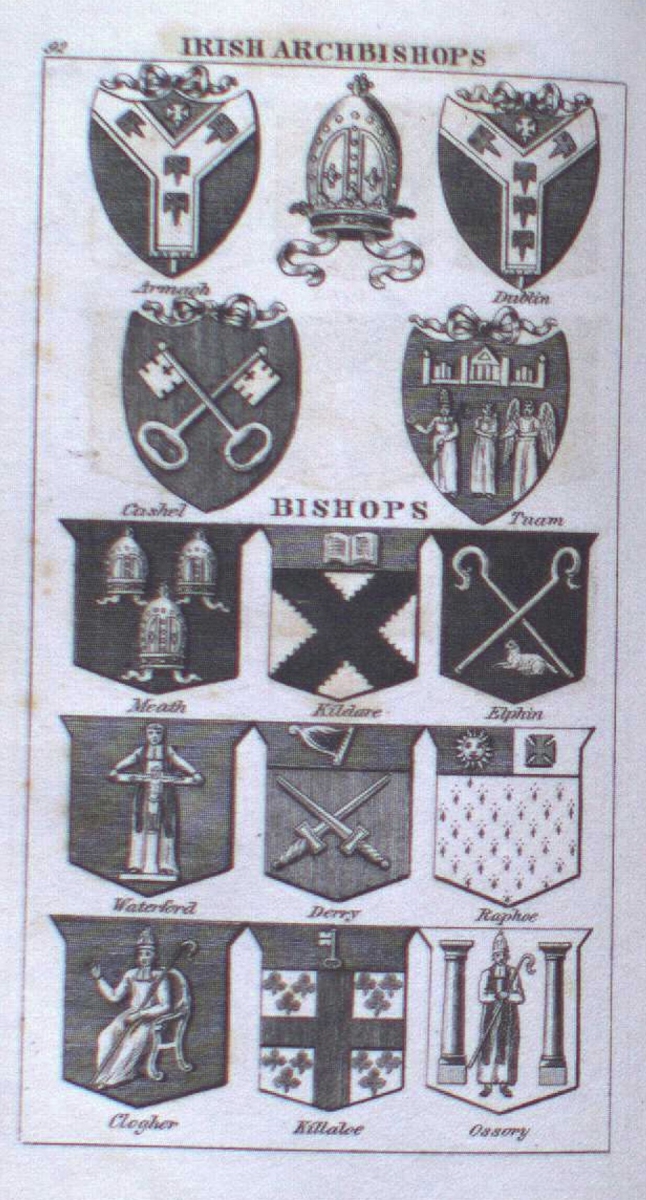
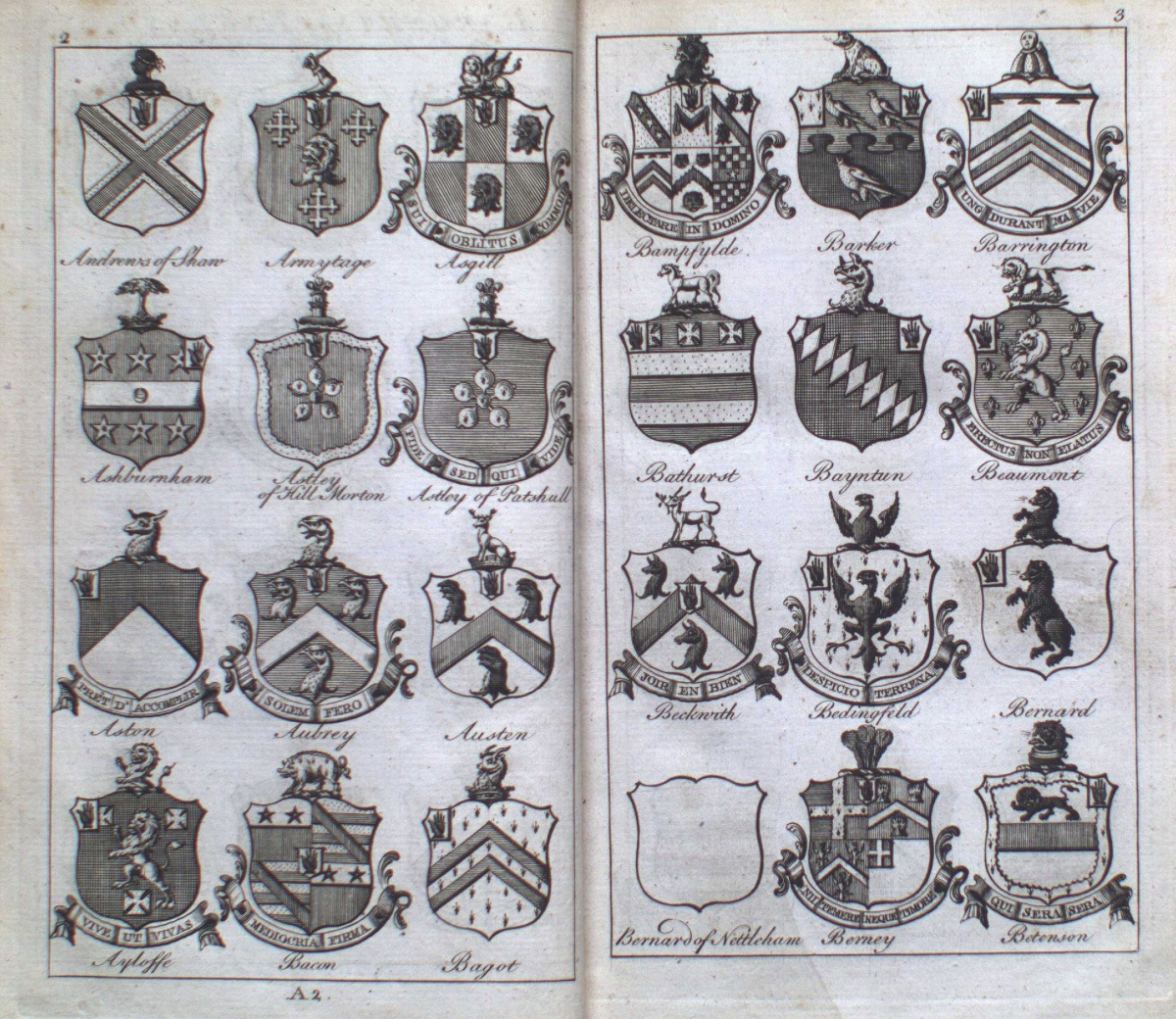
Heraldry has a language all its own. Many of the words used to describe, or blazon, a coat of arms have been retained from medieval French and Latin. Colours such as red, blue, orange and green are instead referred to as gules, azure, tenné and vert. Silver and gold become argent and or; left and right become sinister and dexter. Books such as Clark and Wormull's 1794 A Short and Easy Introduction to Heraldry in Two Parts ('containing upwards of a thousand examples'), which is neither short nor easy, attempted to explain the intricacies of heraldric language.
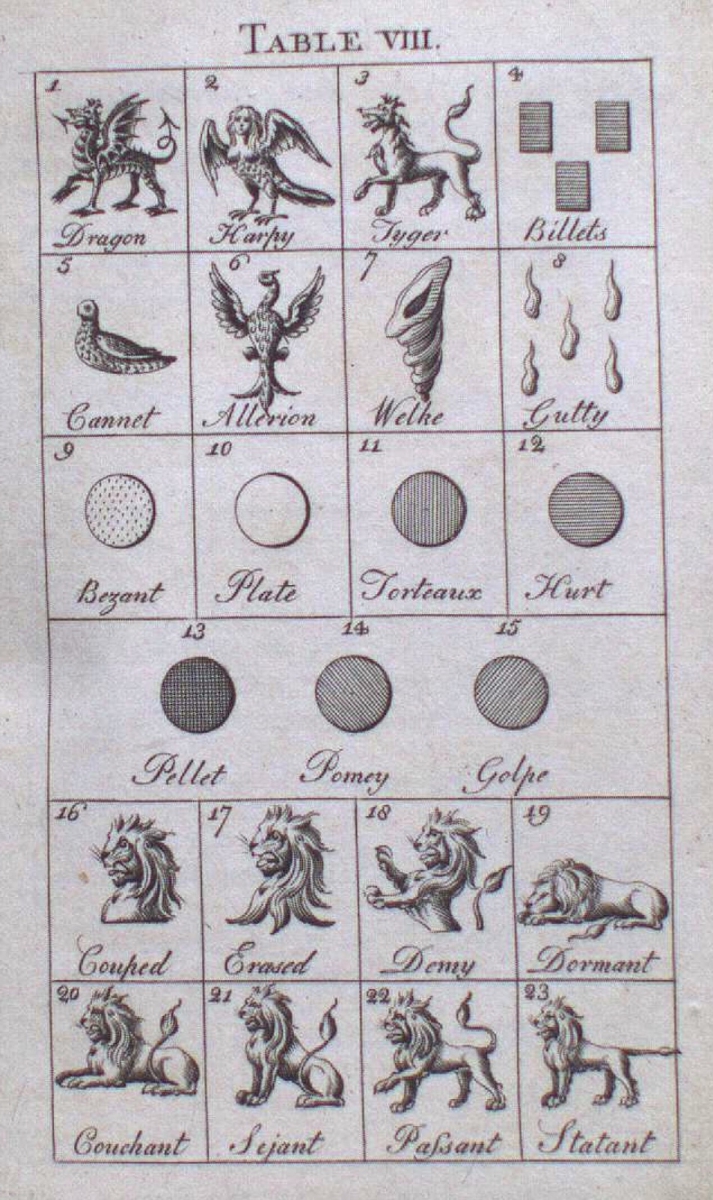
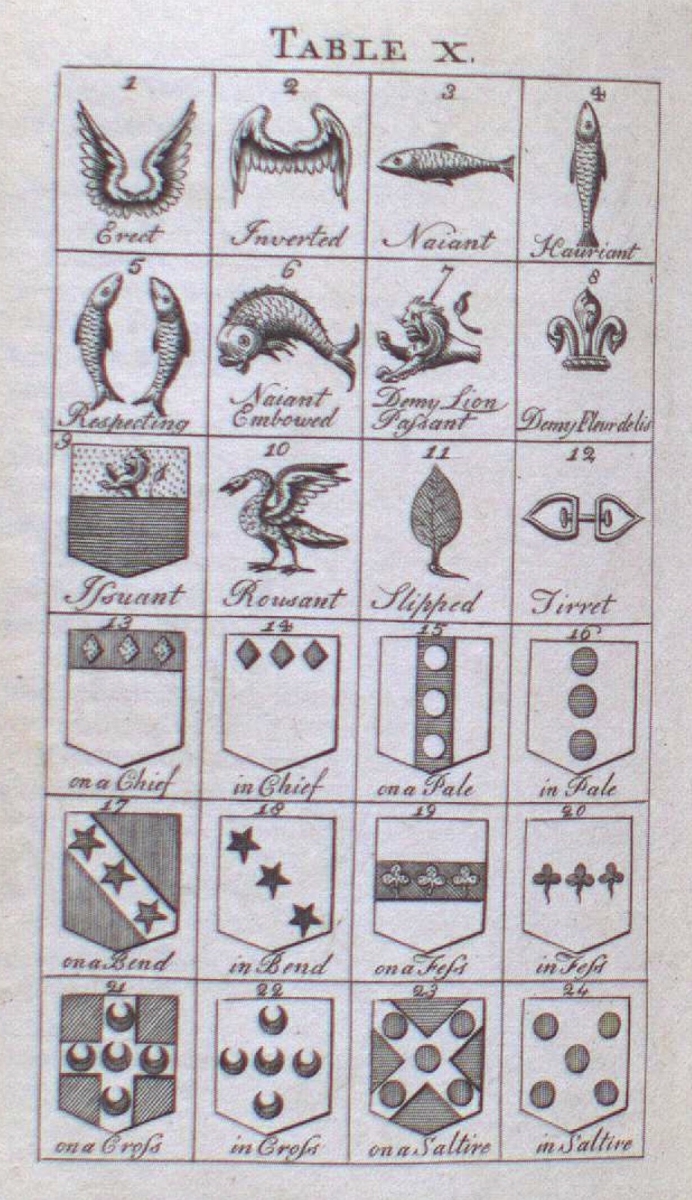
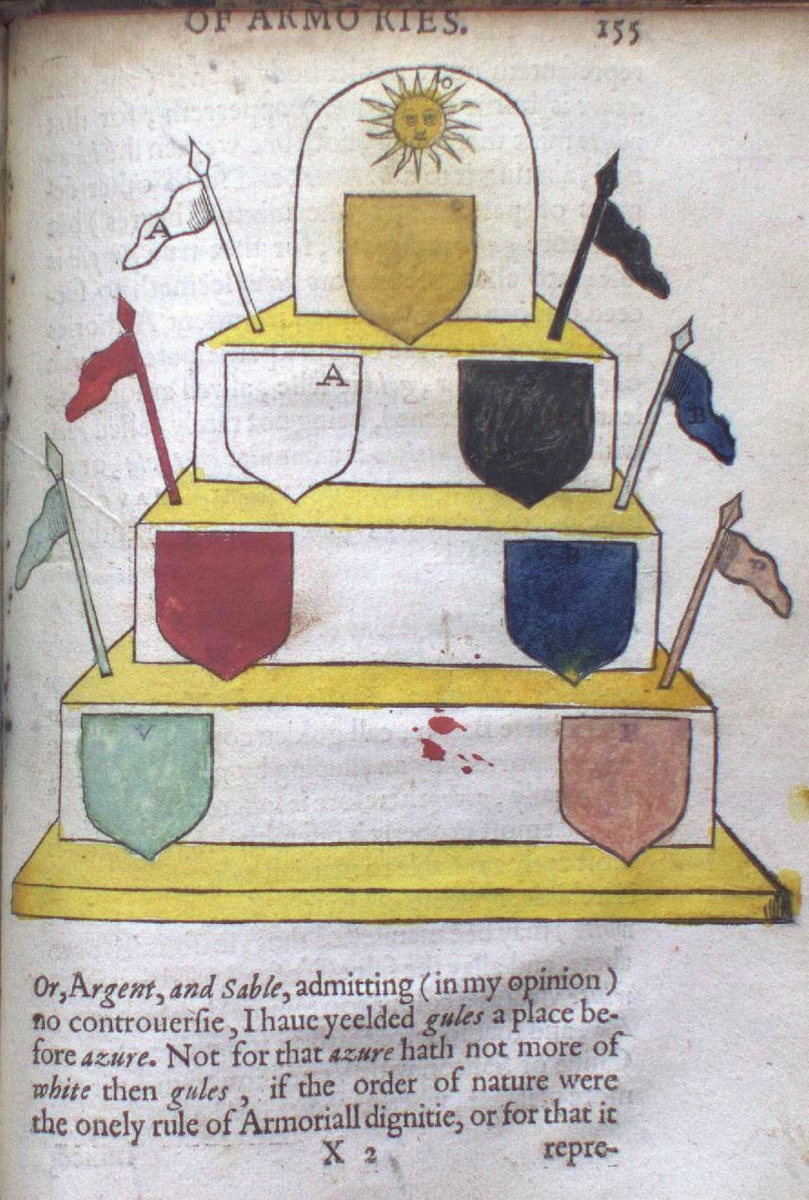
Just as arms proclaimed rank to those who saw them, the elements in the arms might also be ranked. When Sir Amias and Sir Eustace rated the colours, gold was considered the most prestigious. Many animals make appearances in arms. The lion and eagle are common, but one might also find a dragon, a duck or even a welke. One book from 1842, is entirely devoted to the Heraldry of Fish.
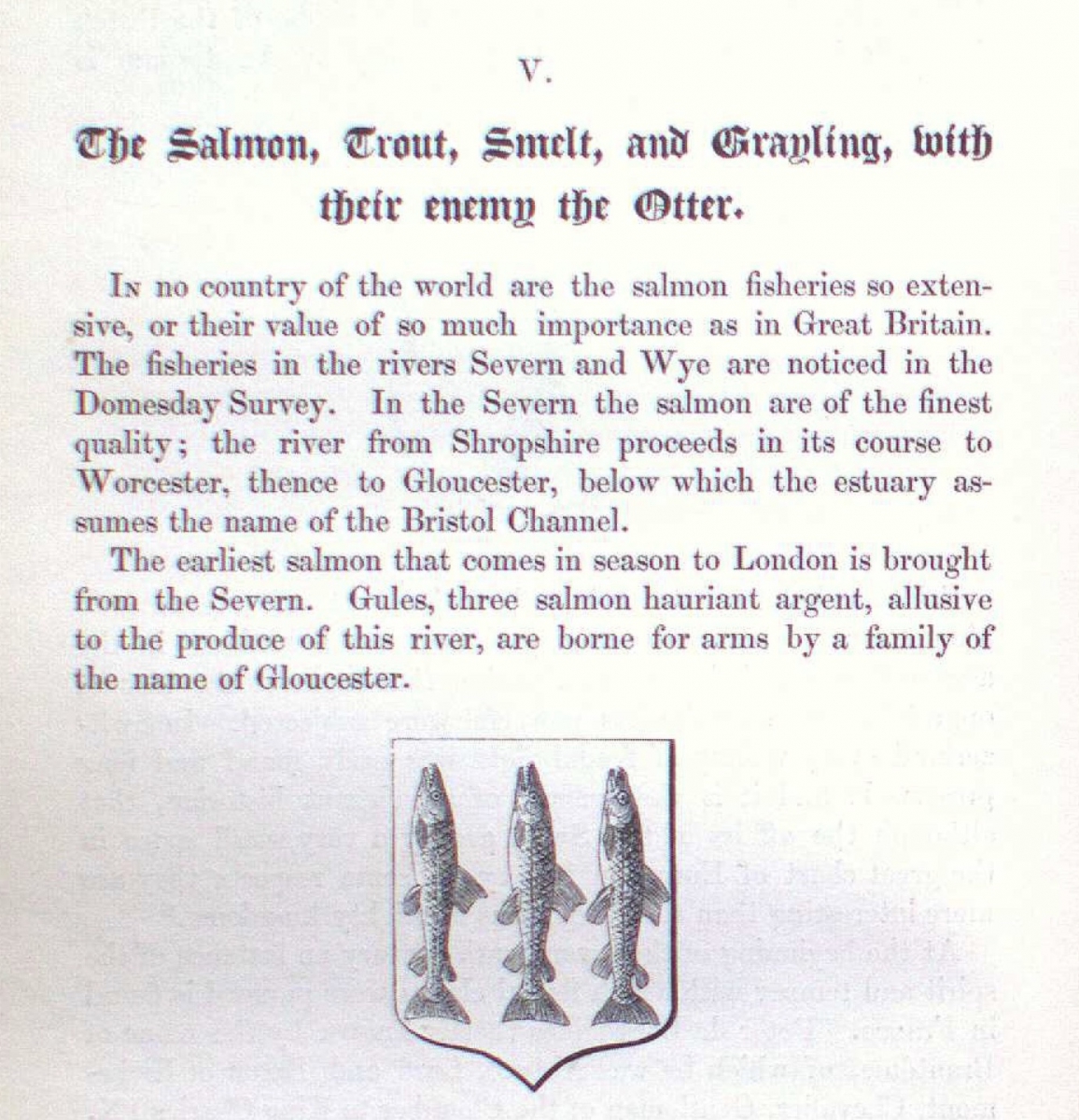
The purpose of the blazon is to allow the reader to accurately recreate the arms from the description. Any words not strictly necessary are left out. The combination of the unfamiliar words and abbreviated language makes blazons difficult to understand. This, for example is a portion of the blazon for the arms of the Territory of Nunavut which was adopted in 1999:
“Or dexter a qulliq Sable enflamed Gules sinister an inuksuk Azure on a chief also Azure above five bezants in arc reversed issuant from the lower chief a mullet (niqirtsuituq) Or”
Heraldry has been in use for nearly a thousand years, and is still used today to identify individuals, provinces, cities and corporations. Canada has its own heralds at the Canadian Heraldic Authority. Canadian heraldry includes references to Canadian symbols, flowers and animals, as well as some uniquely Canadian forms such as the Canadian pale, found on our flag.

